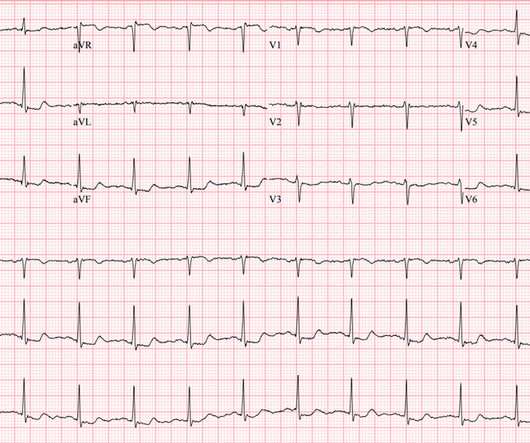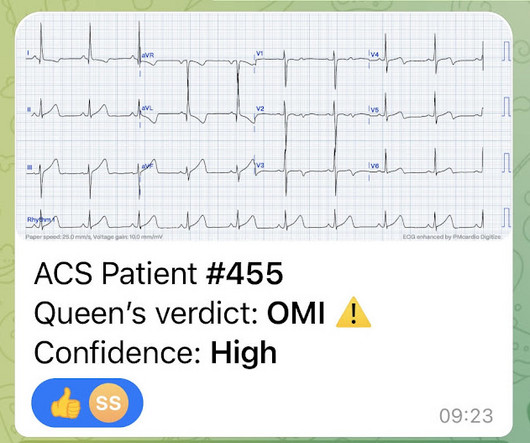Diffuse Subendocardial Ischemia on the ECG. Left main? 3-vessel disease? No!
Dr. Smith's ECG Blog
NOVEMBER 19, 2016
The diagnostic coronary angiogram identified only minimal coronary artery disease, but there was a severely calcified, ‘immobile’ aortic valve. Aortic angiogram did not reveal aortic dissection. The ECG cannot diagnose the etiology of ischemia; it only the presence of ischemia, from whatever etiology.











Let's personalize your content